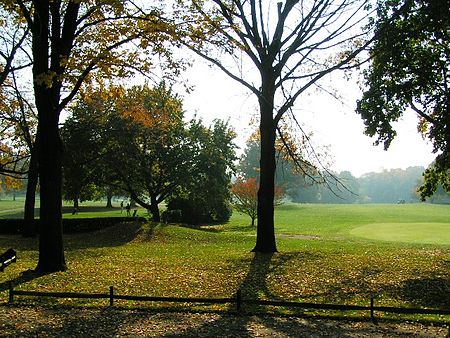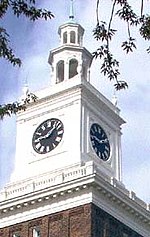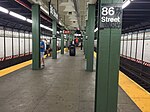Dyker Beach Park and Golf Course

The Dyker Beach Park and Golf Course is a public park and a municipal, 18-hole, championship golf course in the southernmost part of Dyker Heights, Brooklyn, in New York City, United States. The area stretches from the Belt Parkway in the south to 86th Street in the north, between 7th Avenue on the west and 14th Avenue on the east. The course totals 217 acres and includes 6,548 yards of golf. Both the park's and the course's roots go back more than 100 years, and it is one of the most played public golf courses in the nation.The golf course is managed by the American Golf Corporation, which not only won the contract to run the majority of New York City courses in 1999 but also renovated and expanded the club house in 2007-2008. Dyker Beach Golf Course is one of the oldest golf courses in the United States and second oldest in New York City, behind Van Cortlandt Park, in the Bronx. The course is open all year round so long as weather conditions allow for play.
Excerpt from the Wikipedia article Dyker Beach Park and Golf Course (License: CC BY-SA 3.0, Authors, Images).Dyker Beach Park and Golf Course
VA Hospital Entrance Road, New York Brooklyn
Geographical coordinates (GPS) Address Phone number Website External links Nearby Places Show on map
Geographical coordinates (GPS)
| Latitude | Longitude |
|---|---|
| N 40.610833333333 ° | E -74.019166666667 ° |
Address
Dyker Beach Golf Course
VA Hospital Entrance Road
11228 New York, Brooklyn
New York, United States
Open on Google Maps








